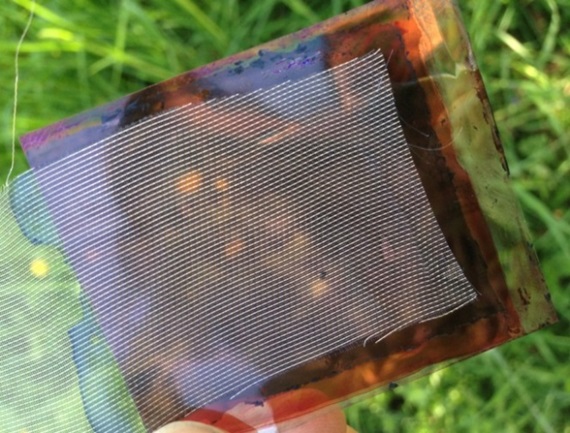Organic Optical and Electronic Devices
Since organic light emitting diodes share an important part of the display market, organic semiconductors are emerging as alternative materials in electronics. These materials possess unique absorption properties allowing colored or even fully transparent devices with cost-efficient processability.

Organic solar cell devices
Organic photovoltaic devices have made steady progress during the last decade culminating recently in a record power conversion efficiency of more than 13%. A unique selling point of this technology is the fact that nicely colored or even transparent devices can be manufactured. In order to obtain translucent devices, fully transparent electrodes are required. Such electrodes can be fabricated on a large scale by weaving conducting wires into fabrics.
Organic light emitting devices
While organic light emitting displays are spreading on the market, the same technology could actually be applied to the field of lighting, offering large area light emitting surfaces with perfect colour rendering. Of great interest with this respect are organic semiconducting materials with mixed ionic and electronic conductivity. So called electrochemical light emitting displays allow for a much simpler device architecture which is favorable for high throughput large area fabrication.
Organic photodies
Solution based organic photodiodes are attractive for sensing in industrial and medical applications where the control of spectral sensitivity is of importance. Of particular interest are near-infrared light responsive diodes which are visible-blind. By using a judicious materials choice these diodes can be made fully transprent in the visible spectral domain and operate without the need of any filters.

-
Share
